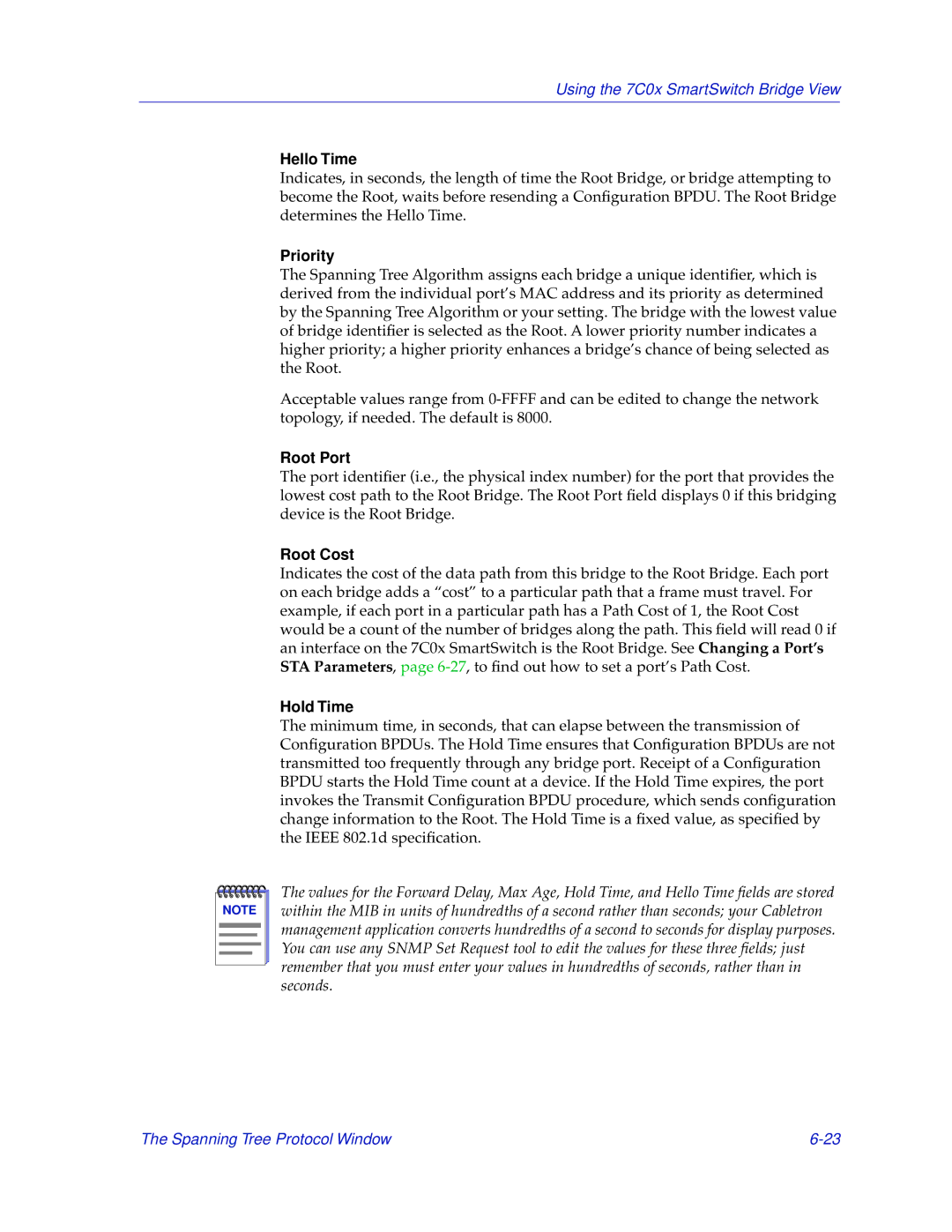
Using the 7C0x SmartSwitch Bridge View
Hello Time
Indicates, in seconds, the length of time the Root Bridge, or bridge attempting to become the Root, waits before resending a Configuration BPDU. The Root Bridge determines the Hello Time.
Priority
The Spanning Tree Algorithm assigns each bridge a unique identifier, which is derived from the individual port’s MAC address and its priority as determined by the Spanning Tree Algorithm or your setting. The bridge with the lowest value of bridge identifier is selected as the Root. A lower priority number indicates a higher priority; a higher priority enhances a bridge’s chance of being selected as the Root.
Acceptable values range from
Root Port
The port identifier (i.e., the physical index number) for the port that provides the lowest cost path to the Root Bridge. The Root Port field displays 0 if this bridging device is the Root Bridge.
Root Cost
Indicates the cost of the data path from this bridge to the Root Bridge. Each port on each bridge adds a “cost” to a particular path that a frame must travel. For example, if each port in a particular path has a Path Cost of 1, the Root Cost would be a count of the number of bridges along the path. This field will read 0 if an interface on the 7C0x SmartSwitch is the Root Bridge. See Changing a Port’s STA Parameters, page
Hold Time
The minimum time, in seconds, that can elapse between the transmission of Configuration BPDUs. The Hold Time ensures that Configuration BPDUs are not transmitted too frequently through any bridge port. Receipt of a Configuration BPDU starts the Hold Time count at a device. If the Hold Time expires, the port invokes the Transmit Configuration BPDU procedure, which sends configuration change information to the Root. The Hold Time is a fixed value, as specified by the IEEE 802.1d specification.
NOTE |
The values for the Forward Delay, Max Age, Hold Time, and Hello Time fields are stored within the MIB in units of hundredths of a second rather than seconds; your Cabletron management application converts hundredths of a second to seconds for display purposes. You can use any SNMP Set Request tool to edit the values for these three fields; just remember that you must enter your values in hundredths of seconds, rather than in seconds.
The Spanning Tree Protocol Window |
